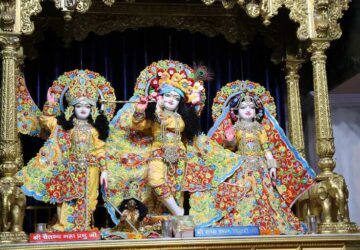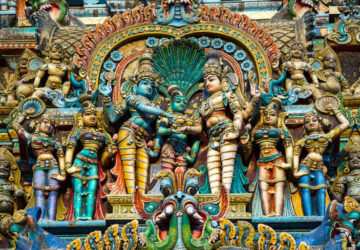
Think Sumo and the first thing that comes to mind are huge Sumo wrestlers pitted against each other. They are fighting almost skilfully and gracefully that it makes you think that wrestling is more like an art than a tussle it is supposed to be. Apparently, Sumo wrestling is almost a distinct and ritualistic art for the Japanese and has evolved since its origin.
Wrestling Back Memories

Introduced way back in 1500, Sumo wrestling is Japan’s oldest martial art. Initially, it was performed for good harvests but more or less was and is still centered around the Shinto religion and their source of entertainment. Its popularity spread with time with matches getting brutal to the extent of someone losing and giving up their lives. Scary isn’t it? That’s why when the Sumo came under the protection of the Shogunate regime; it was largely banned as a public spectacle. And only the samurai was allowed to practice and that too as a part of their military regime. But it all changed when peace was finally reinstated, and Sumo has announced the Imperial sport under the backing of the Japanese royal courts.
Getting to the Basics

In 1500, the Sumo wrestling followed a set of strict rules with talented champions backed by powerful feudal lords. In the early 1700’s there was a ranking list with an objective of the “sumotori”, or competitors with a basic set of simple rules that are still followed. The wrestler either knocks his opponent from a specially-sized ring or tactically anyone who first touches the ground leaves the ring before his opponent, loses. The fights generally take place on an elevated ring called a “dohyo”, which is made of clay and covered in a layer of sand, resembling the roof of a Shinto shrine. The fights themselves usually last only a few seconds, or in rare cases, about a minute.
The Ceremony Begins….
Now every Sumo tournament starts and ends with pomp and ceremony. Dating back to Japan’s Edo period, the attires are colourful with designs depicting the ancient traditions and meanings worn by the wrestlers, the referees, and the various attendants and helpers. The grand champions enter the ring first and begin their own elaborate rituals called “dohyo-iri” dressed in intricately and expensive embroidered silk aprons. After gathering in a circle, clapping hands and performing lengthy and ritualistic gestures, they leave the ring only followed by the lower-ranked sumotori who then carry out the same ritual.
Followed By The Match….
The match begins when two Rikishi or wrestlers are wearing nothing but their traditional loincloth, or “Mawashi”. The opponents are not pitted depending upon their respective weight; in fact, very often the competitor may just be squaring off against a much heftier or even lighter opponent. Therefore most of the wrestlers prefer weight gain.
This is followed by the “chiri-chozu” ceremony where both men squat at opposite ends of the ring, extend their arms and then clap their hands once. Then a foot stamping ritual called shiko is performed by them after which each wrestler tosses unrefined salt in order to purify the ring.
The entire match has a series of 70 accepted Sumo moves, some of which are pushing, slapping, hoisting, tripping, pinning or throwing. The participants generally weigh between 250 and 500 pounds and the system is followed till today. During the course of the match, there are a set of regulations and lines drawn that have to be followed.

By the end of it someone wins or loses and accordingly depending upon the number of matches ranking is given.
There are about six tournaments held every year, each one lasting 15 days. Three of the tournaments are held in Tokyo and one each in Osaka, Nagoya and Fukuoka.
Enjoying the glory…
There are about six different Sumo divisions, and twenty awards are divided amongst the competitors. Of course, the most prestigious being the Emperor’s Cup and it is the goal of every Sumo wrestler to have his name engraved in the cup and his public acceptance. Also, there is a hierarchy system, the one who stands at the top is the yokozuna (grand champion) who retains the status forever but if his position seems to be daggling somehow, he is expected to retire.
How to be a Sumo wrestler?
There are numerous Sumo schools in Japan with recruits as young as teenagers. There is an entry test where each youth must pass a weight class before acceptance. Once they are enrolled, the curriculum teaches rules, etiquette, basic techniques and the history of Sumo. It is taken for granted that once a young man enters a stable, he must aspire to be an accomplished wrestler or rikishi with his commitment and dedication.
The highly trained wrestlers who are generally between the 20 and 35 years old live together in residential and training complexes, called stables under the strict and rigorous regimen of their coach or the stable master who are generally retired Rikishi.

Even within a Sumo stable, there is a specific and strictly enforced ranking. Meals also play a significant role in weight training. The typical sumo dish, chanko nabe, is a hearty stew full of vegetables, meat and fish.
Though earlier force-feeding was a part of the regime due to health conditions the current set of wrestlers are using high protein foods for optimum weight gain complemented with weight training and other forms of exercise to create slimmer, yet equally powerful wrestlers.
In spite of its traditional roots, this archaic ritual continues to draw new fans and growing international interest as far as Europe, North America and Britain. In fact, the celebrity status and adulation gained by the Grand champions is almost iconic. As the sport is constantly evolving, even women are stepping into the Sumo circle. But how far will they go in this male-dominated sport, only time will tell?
Explore the best of Japan tourism with SOTC’s Japan tour packages.





Related Post
10 Best Places To Visit Around The World In April (2023)
Places to Visit in January, February and March (2024)
The Most Incredible Bucket List Experiences In Queensland
7 Scenic Monsoon Spots near Delhi within 350 Km
Places to Visit in Ladakh
Fifteen Free Things To Do In Dubai
Things To Do In Auli
Tibetan Cultures in India
Wander the Roads Less Travelled of Goa
Ten Most Instagrammable Places in Bali